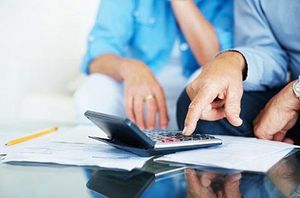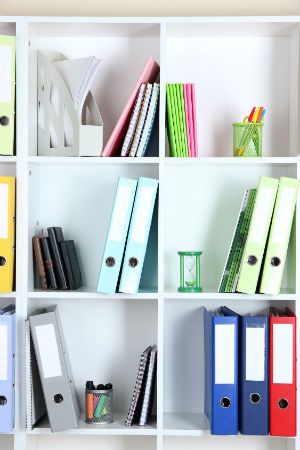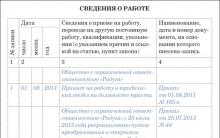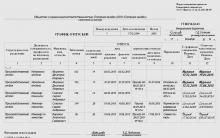All individual entrepreneurs (IP) and organizations using (STS) must submit an income declaration to the tax office. To determine the amount of profit, it is necessary to keep a register of financial transactions during their activity.
For this purpose, it is applied income and expense ledger. How to properly register transactions in order to avoid penalties?
Definition, interpretation and composition
The abbreviation KUDiR was created from the first letters of the phrase "book of income and expenses."
 During the implementation of activities, certain financial transactions are registered in it, confirmed by such documents:
During the implementation of activities, certain financial transactions are registered in it, confirmed by such documents:
- bank statements;
- and orders;
- invoices (for example,);
All types expenditure actions, subject to registration in the book, are indicated in two articles of the Tax Code of the Russian Federation - 249 and 250. There are also some types of costs, which are also subject to registration on the basis of the first paragraph of Art. 346.16 NK. An entry on the payment of the minimum tax is not made, because. it does not equate to items of expenditure.
Fixing the amount on debit transactions to be made only after receipt of goods or services and full payment of their cost. For example, a periodic monthly payment for the rental of premises can be made no earlier than the last day of the month for which the amount is transferred to the landlord.
Confirming there will be a payment order from the bank; and an act of transfer in connection with the lease of the premises.
Revenues are recorded on the pages of the book on a cash basis. Advance transactions are also recorded on the day the prepayment is received, entering data from the supporting primary document.
If during the check an individual entrepreneur or an organization with a simplified tax system does not have a KUDiR, then they are punished with a fine. Its size is for organizations - 10 thousand rubles, and for individual entrepreneurs - 200 rubles.
Book keeping rules
Individual entrepreneurs, organizations with the simplified tax system and using them should keep records of the movement of finances in the course of their activities by entering information into the KUDiR. It is not necessary to register it with the tax office, because. this rule has been abolished since 2013. Based on the booklet's account data, taxes are calculated and a declaration is made for the tax office.
 Reference options There are only two books in this book:
Reference options There are only two books in this book:
- The handwritten method is used to fill out special forms, and numbered into a single document.
- An electronic method of maintaining the registration of financial transactions, which is maintained throughout the calendar year in a digital code. Then, at the end of the year, the pages are printed, numbered and stapled.
At the beginning of each calendar year, a new accounting book for income and expenses is created. Information on paper on the annual activities of the taxpayer must be stored for 4 years.
Attention! The presence of the book is not canceled for taxpayers who do not carry out economic activities in the reporting periods.
How to fill out the Book of Accounting for Income and Expenses is discussed in the following video:
If you have not yet registered an organization, then the easiest this can be done using online services that will help you generate all the necessary documents for free: If you already have an organization and you are thinking about how to facilitate and automate accounting and reporting, then the following online services come to the rescue, which will completely replace an accountant at your plant and save a lot of money and time. All reporting is generated automatically, signed with an electronic signature and sent automatically online. It is ideal for an individual entrepreneur or LLC on the simplified tax system, UTII, PSN, TS, OSNO.
Everything happens in a few clicks, without queues and stress. Try it and you will be surprised how easy it got!
Decor
Maintaining KUDiR differs depending on the chosen one, so you need to choose a special form for such tax reporting systems:

Title page and pages number and with the help of a cord are combined into a brochure. On the last sheet, the knot is sealed. The glued piece of paper indicates the number of pages in the document, certified by a signature and seal, if any.
When entering data on payment transactions, errors may be made, but there is a possibility of them to correct. In principle, there is nothing terrible here, because. erroneous data can be easily corrected in the following ways:
- in an electronic record by deleting incorrect parameters and replacing them with correct information.
- when filling out by hand, you need to cross out the indicator and enter reliable information. Each correction is confirmed by the signature of the head with a seal ().
What is the penalty for the taxpayer? for false information in KUDIR? If the tax was incorrectly calculated according to incorrect parameters, then you will have to pay 20% of its amount in the form of a fine. For deliberate concealment of information about the parameters, due to which the amount of tax liabilities paid has been reduced, there is a penalty of 40% of the tax.
It is possible to prevent the application of sanctions for unreliable accounting in KUDiR in the case of timely paid tax payments. But they must be correctly calculated, even if incorrect data is taken from the brochure. For payment of tax in full under such circumstances, the fine is subject to cancellation.
Fill tabular data on income and expenses need to be very carefully. The tax service is always interested in the rationale for cost items and supporting primary documents. Replenishment of an IP account in a bank from personal funds is not reflected in income for this book. The same applies to the increase in the organization due to the receipt of an interest-free loan.
Explanations about the content of KUDiR are discussed in this video material:
Filling order
The book starts with title page, which reflects:
- details of individual entrepreneur or organization;
- start date of accounting transactions;
- the object of taxation, where the phrase is either “income” or “Income plus expenses”.
First section contains information about quarterly income and expenses. It contains four tables - for each quarter of the year. The fields are divided into 5 columns:
- No. p / p;
- date and number of the financial document confirming the expenditure or receipt transaction;
- Contents of operation;
- the amount of income to be credited to the base for taxation;
- expenses that need to be taken into account when calculating the base for taxation.
The section ends with a certificate that organizations with “income” do not fill out.
 Second section subject to entering data on the costs of acquiring fixed assets and intangible assets. Only organizations on the simplified tax system “Income minus expenses” fill out this section. Property, plant and equipment includes property and equipment used in operations for more than 12 months. Intangible assets include intellectual developments, invention rights, etc.
Second section subject to entering data on the costs of acquiring fixed assets and intangible assets. Only organizations on the simplified tax system “Income minus expenses” fill out this section. Property, plant and equipment includes property and equipment used in operations for more than 12 months. Intangible assets include intellectual developments, invention rights, etc.
Third section also fill out only organizations on the simplified tax system "Income minus expenses". The section fields are filled with parameters of losses related to the previous tax period or current, which can be reflected in the future.
Fourth section is allocated for filling by taxpayers on the simplified tax system "Income". The main indicators that you need to enter here are paid. These parameters reflect "for themselves" and wage workers.
The nuances of using KUDiR
Registration of financial transactions in KUDiR during the conduct of business activities for each type of simplified taxation is different.
 But for all taxpayers there is such general procedure for entering information:
But for all taxpayers there is such general procedure for entering information:
- entries are made in Russian;
- the book records only transactions during the tax period when carrying out activities that are involved in the calculation of tax liabilities;
- each entry is made according to the data from the primary document;
- the chronology of records for each individual operation is observed.
Tables cannot arrange entries by day or type of transaction. Each specific operation must be entered on a separate line.
What other nuances exist when filling out tabular data can be understood by considering examples of fixing expenditure and income transactions.
With USN
According to the first section, entering information into quarterly tables is carried out line by line. Here we can recommend in the second column to reflect not only the number and date of the operation, but also the name of the primary document.
 If the activity in the tax period was not carried out, it is necessary fill in the zero KUDiR. It fills in the data on the title page, and leaves all other pages blank.
If the activity in the tax period was not carried out, it is necessary fill in the zero KUDiR. It fills in the data on the title page, and leaves all other pages blank.
For simplistic people with the simplified tax system "income" 6% income must be entered in the columns of the 4th column. For example, money was received for the rendered service in the amount of 5 thousand rubles. according to check No. 2 dated February 15, 2016. In this case, the cost of the service in the amount of 5 thousand rubles. entered in column 4. An overpaid amount for the service in the amount of 500 rubles was revealed, which was returned to the client on May 16, 2016. A separate line fixes the serial number, check and date of the refund, and the amount is entered in the column of the 4th column with a minus sign “-500”.
Filled in on the simplified tax system 6% only Income. Please note that in this section, not all insurance premiums should be indicated, but only those that reduce the simplified tax.
Operations in the book are fixed on a cash basis, i.e. on the date of receipt or payment of funds.
If used USN "income minus expenses", then readings are entered in the income columns, as in the previous STS "income" 6%. At the same time, focus more on filling out the expense columns.
For example, they introduce cost information separately for each event:
- Goods for resale - the primary document issued by the Bill of lading No. 1092 dated February 26, 2015.
- Services, write the date of the expense for the service and the number of the report. For example, 04/30/2015. Receipt No. 00000003.
- Expenses are paid in cash, which are entered from the sales receipt: date and number. Example: 05/25/2015 Receipt No. 00000014.
- Return: you sold some product (provided a service), while you were paid more. Then you returned the overpaid amount to the client. In this case, you need to reduce the “Income” column, for which you reflect (by the actual date of the surplus given) in it, as in the previous version, the negative value of the amount.
Expenditure amounts for the purchase of goods are fixed after receiving finance from its sale.
Patent
If the activity is carried out on a patent (PSN), then you need to use the KUDiR form, approved for use since 2013. Only income columns are filled in the lines, because. when using a patent, expenses are not subject to registration in KUDiR. 
BASIC
Organizations on OSNO do not apply KUDiR. IP on OSNO keep a special book with. It differs significantly from the one used under the USN, because. information is provided on pages that have significant differences.
The rules for registration of the Book in electronic form using 1C are set out in the following video lesson:
Changes for 2019
Starting from 2018, the Book of Income and Expenses contains an additional fifth section. It must be completed by those who pay tax on the simplified tax system on income of 6%. This section indicates the amount of the trading fee. This allows this category of taxpayers to reduce the amount of contributions paid to the budget by the amount of the trade tax. The rest of the rules for filling out the KUDiR remained unchanged.











How to issue a power of attorney to represent the interests of an LLC to an individual?
How to apply for an IP: step by step instructions
Form of power of attorney to receive goods or material assets
The deadline for registering an individual entrepreneur in the tax
Business plan for a law firm: an example with calculations legal support for a business